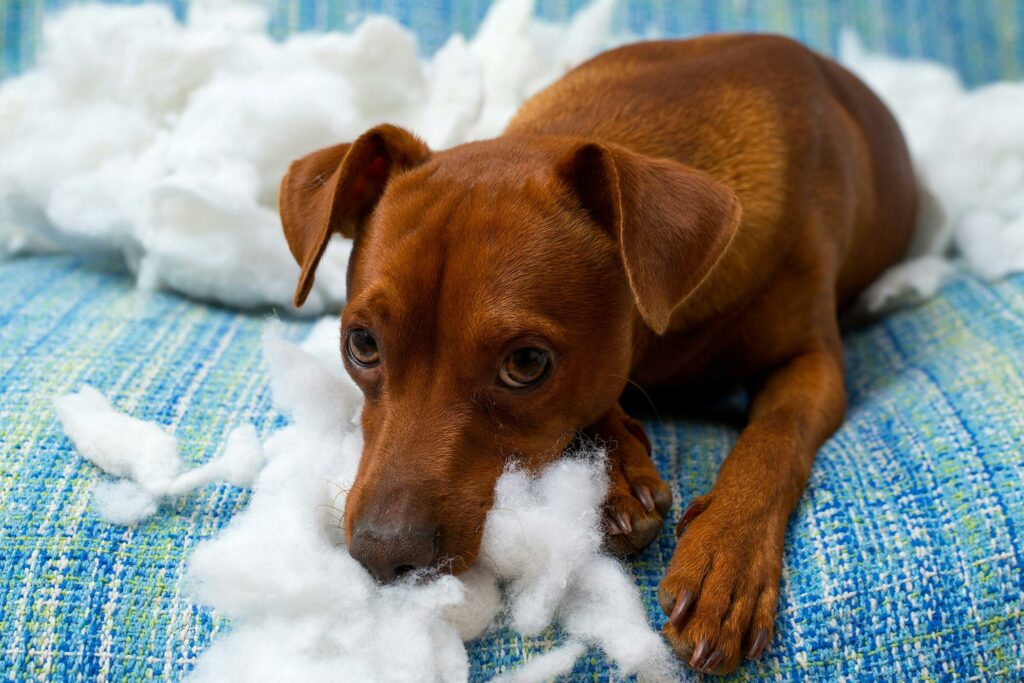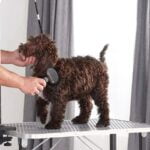Table of Contents
Destructive behavior in pets can be frustrating and challenging for pet owners. Whether your pet is chewing on furniture, digging up the yard, or scratching at doors, addressing these behaviors is essential for maintaining a harmonious home. This guide on dealing with destructive behavior in pets offers seven effective strategies to help you manage and reduce your pet’s destructive tendencies.

Top Strategies for Dealing with Destructive Behavior in Pets
1. Identify the Cause
The first step in addressing destructive behavior is to identify the underlying cause. Common reasons for destructive behavior include boredom, anxiety, teething in young pets, and lack of proper training. Observing your pet’s behavior and the circumstances in which it occurs can provide valuable insights. For more on identifying the cause, visit ASPCA Destructive Chewing.
2. Provide Adequate Exercise and Mental Stimulation
Pets often exhibit destructive behavior when they have excess energy or are bored. Ensure your pet gets plenty of physical exercise and mental stimulation through activities like walks, playtime, and puzzle toys. A tired pet is less likely to engage in destructive behavior. For exercise and stimulation tips, see PetMD Mental Stimulation.
3. Offer Appropriate Chewing Alternatives
If your pet is chewing on inappropriate items, provide them with suitable alternatives such as chew toys or bones. Choose durable, safe toys that can withstand heavy chewing. Reward your pet for chewing on appropriate items to reinforce good behavior. For more on chewing alternatives, visit Humane Society Dog Toys.
4. Use Positive Reinforcement
Positive reinforcement is a powerful tool for modifying your pet’s behavior. Reward your pet with treats, praise, or playtime when they exhibit desirable behavior. Consistently reinforcing positive actions helps your pet understand which behaviors are acceptable. For more on positive reinforcement, see Clicker Training Positive Reinforcement.
5. Create a Safe and Comfortable Environment
Ensure your pet has a safe and comfortable environment that meets their needs. Provide a cozy bed, access to food and water, and a designated area for play and rest. Reducing stress and providing comfort can help minimize destructive behavior. For environment tips, visit The Spruce Pets Cat-Proofing.
6. Address Anxiety and Fear
Destructive behavior can be a sign of anxiety or fear, particularly in pets that are left alone for long periods. Addressing anxiety may involve desensitization and counterconditioning techniques, providing a safe space, or using calming products. In severe cases, consult a veterinarian or a professional trainer. For more on addressing anxiety, visit PetMD Anxiety.
7. Consistent Training and Supervision
Training is essential for teaching your pet acceptable behavior. Use positive reinforcement techniques to train your pet and supervise them closely to prevent destructive actions. Redirect your pet to appropriate behaviors when necessary and provide clear, consistent instructions. For more on training and supervision, see AKC Positive Reinforcement Training.
Conclusion on Dealing with Destructive Behavior in Pets
Dealing with destructive behavior in pets requires patience, consistency, and a proactive approach. By identifying the cause, providing adequate exercise and mental stimulation, and using positive reinforcement, you can effectively manage and reduce your pet’s destructive tendencies. Follow these seven strategies on dealing with destructive behavior in pets to create a happier and more harmonious home environment. For more pet care tips, check out our Pet Care Guide.
FAQs on Dealing with Destructive Behavior in Pets
What are common causes of destructive behavior in pets?
Common causes include boredom, anxiety, teething, lack of exercise, and improper training. Identifying the cause can help address the behavior effectively.
How can I prevent my dog from chewing on furniture?
Provide appropriate chew toys, use positive reinforcement to reward good behavior, and supervise your dog to prevent access to furniture. Training and exercise can also help reduce chewing.
What should I do if my cat scratches furniture?
Provide scratching posts and encourage your cat to use them by placing them in prominent areas. Use positive reinforcement to reward your cat for using the scratching post.
How can I help my pet with separation anxiety?
Gradually desensitize your pet to being alone, provide a safe space, and consider using calming products. Consult a veterinarian or professional trainer for severe cases.
Are there products that can help reduce destructive behavior?
Yes, products such as chew toys, puzzle feeders, calming sprays, and anxiety wraps can help manage and reduce destructive behavior in pets.
How long does it take to see improvement in destructive behavior?
The time it takes to see improvement varies depending on the pet and the severity of the behavior. Consistent training, exercise, and positive reinforcement can lead to gradual improvement.











